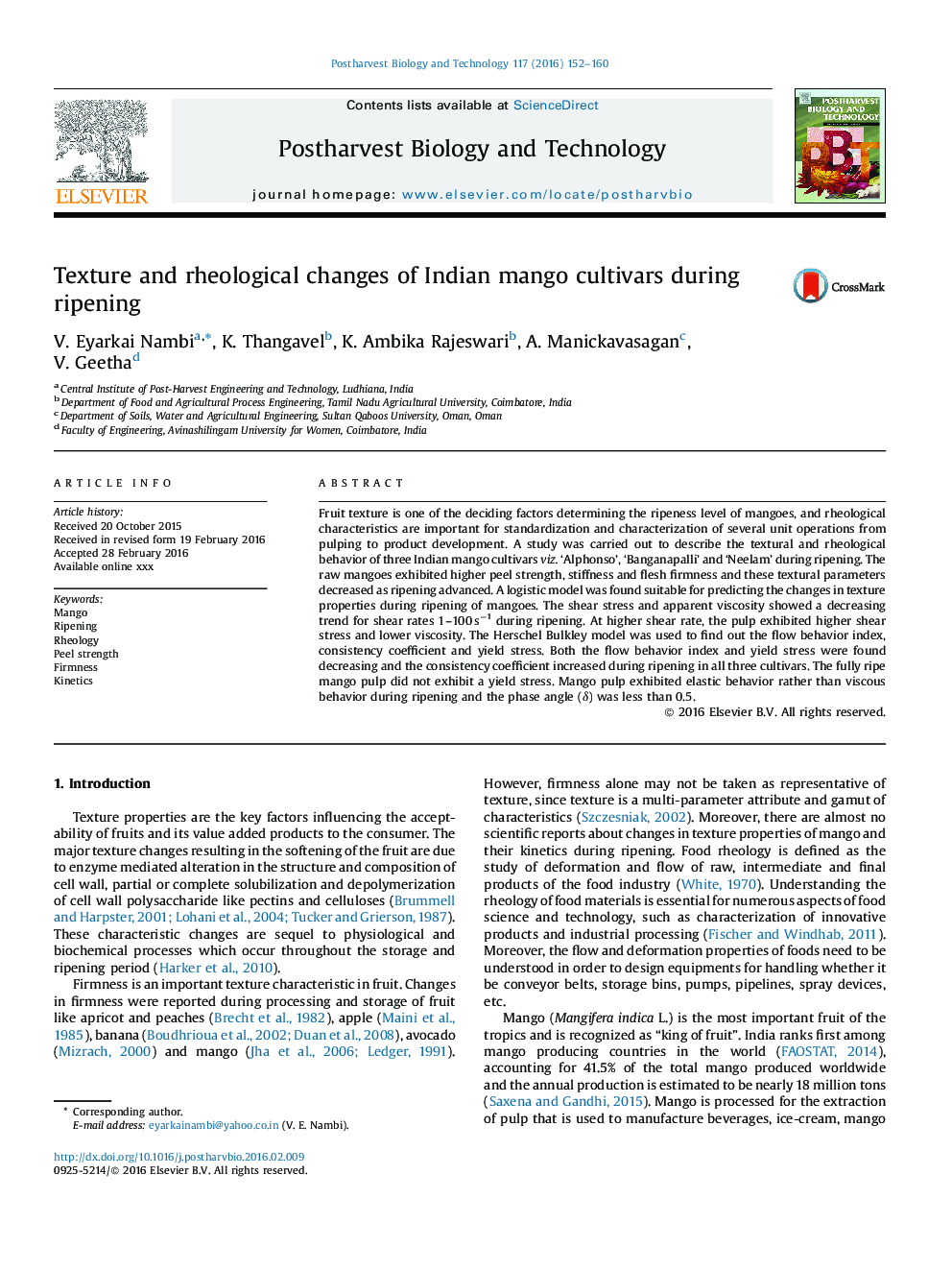| Article ID | Journal | Published Year | Pages | File Type |
|---|---|---|---|---|
| 6378592 | Postharvest Biology and Technology | 2016 | 9 Pages |
Abstract
Fruit texture is one of the deciding factors determining the ripeness level of mangoes, and rheological characteristics are important for standardization and characterization of several unit operations from pulping to product development. A study was carried out to describe the textural and rheological behavior of three Indian mango cultivars viz. 'Alphonso', 'Banganapalli' and 'Neelam' during ripening. The raw mangoes exhibited higher peel strength, stiffness and flesh firmness and these textural parameters decreased as ripening advanced. A logistic model was found suitable for predicting the changes in texture properties during ripening of mangoes. The shear stress and apparent viscosity showed a decreasing trend for shear rates 1-100 sâ1 during ripening. At higher shear rate, the pulp exhibited higher shear stress and lower viscosity. The Herschel Bulkley model was used to find out the flow behavior index, consistency coefficient and yield stress. Both the flow behavior index and yield stress were found decreasing and the consistency coefficient increased during ripening in all three cultivars. The fully ripe mango pulp did not exhibit a yield stress. Mango pulp exhibited elastic behavior rather than viscous behavior during ripening and the phase angle (δ) was less than 0.5.
Related Topics
Life Sciences
Agricultural and Biological Sciences
Agronomy and Crop Science
Authors
V. Eyarkai Nambi, K. Thangavel, K. Ambika Rajeswari, A. Manickavasagan, V. Geetha,
